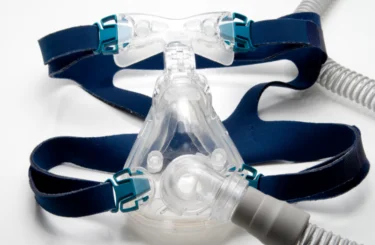
Proving Liability in Michigan Pedestrian Injury Cases
Pedestrian-vehicle collisions can cause devastating, debilitating spinal injuries and brain trauma, long-lasting emotional distress, and significant financial loss. Other pedestrian injuries, like trips, slip-and-falls, and sidewalk accidents, can also cause long-term damages.
Although proving fault is not necessary to recover benefits from auto insurance policies under Michigan law, these benefits do not always apply or fully compensate pedestrians for injuries. Sometimes, it may be necessary to file a lawsuit to recover what you deserve. Here’s what you need to know about pursuing damages and proving liability in Michigan pedestrian injury cases.
Drivers and Pedestrians: Sharing the Road, Sharing the Responsibility
Everyone who uses Michigan roadways shares a duty to use reasonable care and follow the rules of the road. This includes pedestrians, motorists, and bicyclists. Usually, failing to follow the rules results in a citation with civil penalties (i.e., a fine or suspension of your driver’s license). In some cases, violating the road rules can result in criminal penalties (reckless driving, driving under the influence, etc.).
The Michigan Uniform Traffic Code specifies the legal requirements for drivers and pedestrians using the roadways. Some of the most common interactions between pedestrians and vehicles occur in crosswalks. A driver must yield the right of way to pedestrians in an uncontrolled crosswalk who are already in the driver’s lane when the driver approaches. (For crosswalks at a traffic light or stop sign, the driver must also comply with the signal.) A driver has no legal obligation to stop for pedestrians who have not started crossing or are crossing illegally, other than the duty to use reasonable care. A pedestrian may not begin crossing if a “don’t walk” signal flashes at a marked crosswalk.
Pedestrians must use sidewalks where they are available, but where they are not, pedestrians may walk on the left side of the roadway facing traffic. Pedestrians are not allowed on limited-access highways and are forbidden to disrupt the flow of traffic.
Comparative Fault and Liability
To recover damages in a personal injury case in Michigan, you must prove that someone breached the duty of care they owed and that, as a result, you were injured and suffered damages. Sometimes, a victim’s own actions or failure to act plays a part in the incident that caused their injuries. A judge or jury may reduce the amount of any damages they award to a plaintiff by the percentage the victim was at fault. If the victim is more than 51 percent at fault for an accident, the law does not permit them to recover anything.
For example, a plaintiff suffers injuries while engaged in horseplay in an icy grocery store parking lot. A jury finds that the property breached its duty of reasonable care to maintain the lot in a manner safe for public use, but it also finds that the victim’s actions were the primary cause of his injuries and assigns him 70 percent of the fault. He could not recover any damages.
By contrast, another plaintiff is struck by a car and injured while he legally crosses in a marked crosswalk. A jury finds the driver breached her duty of reasonable care by failing to yield but also finds that the pedestrian was distracted by looking at his cell phone and may not have used reasonable care to watch where he was going. The jury assigns the pedestrian 20 percent fault and awards damages; the plaintiff will be able to recover 80 percent of the total amount of the jury’s damage award.
A plaintiff must present evidence, including police reports, witness testimony, photographs, medical records, accident reconstruction, and more to prove liability. Each defendant will have the opportunity to present evidence on their own behalf to refute the plaintiff’s claims or establish that the plaintiff shares legal responsibility for the incident. Whether you are a plaintiff or defendant, it is vital to retain experienced legal counsel to ensure the best possible resolution.
Improving Conditions and Increasing Accountability
Sixty-eight pedestrian fatalities were reported in Michigan in the first half of 2020, earning it the rank of 11th most deadly state in the U.S. By the end of the year, 175 fatalities were reported statewide, up 17 percent from 2019. Bicycle fatalities also climbed to 38 in 2020, an 81 percent increase from 2019. The Michigan Department of Transportation (MDOT) and the Michigan State Police (MSP) are actively engaged in a statewide campaign to improve roadway safety, called Toward Zero Deaths. According to a 2018 three-year action plan developed by the Michigan Pedestrian and Bicycle Safety Action Team, the state is actively working to improve pedestrian and bicycle safety.
Holding drivers accountable for serious pedestrian injuries is an essential part of improving safety for everyone on Michigan roadways. If you have been injured in a pedestrian accident, you need legal representation. Speak to an experienced Michigan personal injury attorney immediately.
Andy Dragovic
Andy Dragovic is a member of Sommers Schwartz's Personal Injury and Medical Malpractice Groups. His practice is 100% dedicated to helping victims get compensation for their injuries and losses.





